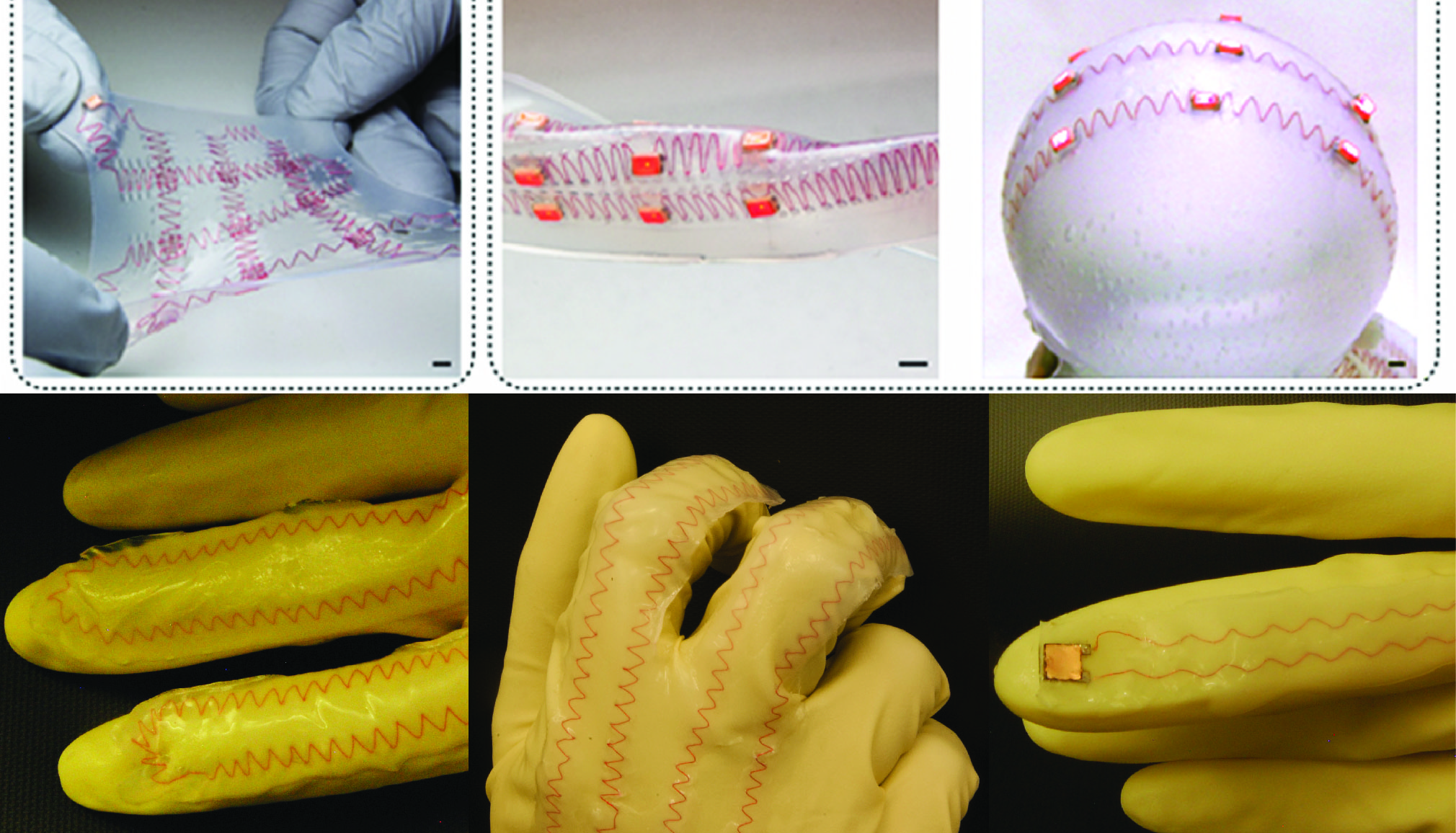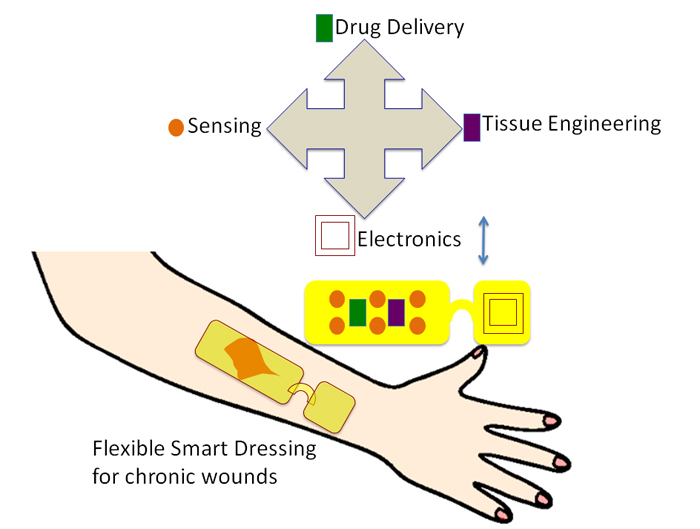Flexible Bioelectronics

A sewing-enabled stitch-and-transfer method for robust, ultra-stretchable, conductive interconnects
Sewing - Wearable electronics
Here, we present a facile method for rapid fabrication of low-cost, stretchable electrical interconnections for wearable electronics. Using a commercial sewing machine, thin metallic wires are sewn onto the wearable materials in a double-stitch zigzag pattern, with the second stitch being a water-soluble polyvinyl alcohol (PVA) thread. The stretchable pattern is secured onto a clothing (e.g., a glove) with a stretchable elastomer coating followed by dissolution of the PVA thread in water. The interconnections maintain a constant electrical conductivity for strains up to 50 % and bending cycles over 15000. As a proof of concept implementation, we sewed interconnects and a soft capacitive force sensor onto a latex glove to create a wearable tactile sensor with a linear sensitivity of 96 fF/N.
Multimedia Publications
A hybrid PDMS-Parylene subdural multi-electrode array
PDMS - Parylene - Epilepsy - Brain Computer Interface (BCI) - Subdural electrode - ECoG - Flexible electrode
a cost effective and simple method for fabricating a flexible multi-electrode array for subdural neural recording. The electrode was fabricated using a PDMS-Parylene bilayer to combine the major advantages of both materials. Mechanical and electrical characterizations were performed to confirm functionality of a 16-site electrode array under various flexed/bent conditions. The electrode array was helically wound around a 3 mm diameter cylindrical tube and laid over a 2 cm diameter sphere while maintaining its recording capability. Experimental results showed impedance values between 300 kΩ and 600 kΩ at 1 kHz for 90 μm diameter gold recording sites. Acoustically evoked neural activity was successfully recorded from rat auditory cortex, confirming in vivo functionality.
Publication
EFRI-BioFLEX: Tissue Engineered Flexible Sensors, Actuators and Electronics for Chronic Wound Management
We are currently developing a smart wound dressing platform for chronic wounds as part of an NSF-funded project led by Ali Khademhosseini of the Brigham and Women's Hospital, in collaboration with Mehmet Dokmeci of Brigham and Women's Hospital, Sameer Sonkusale of Tufts University, and Babak Ziaie of Purdue University. The platform will integrate electronics and an array of physical, chemical, and biological modules capable of sensing (physical and chemical) and active intervention (biological, chemical, and physical) in the wound microenvironment. This platform will bring together several treatment and monitoring modalities on a conformal flexible substrate to revolutionize the treatment of chronic wounds.
ENG/EFRI FY 2012 Awards Announcement
A Biaxial Stretchable Interconnect With Liquid-alloy-covered Joints on Elastomeric Substrate
H. Kim, T. Maleki, and B. Ziaie
This paper reports a biaxial stretchable interconnect on an elastomeric substrate. To increase the stretchability of interconnects, a 2-D diamond-shaped geometry of gold on a polydimethylsiloxane substrate was adopted in which the potentially breakable points were covered with room temperature liquid alloy. Finite element model simulations were performed to identify the most vulnerable points subjected to stress concentration and optimize the design process. Simulations also indicated an optimum gold thickness and linewidth that result in a minimum stress when the substrate is stretched. Four different geometries were designed, fabricated, and characterized. These included: 1) 2-D diamond-shaped gold lines connected at circular junctions with an intersection angle of 90deg; 2) 2-D diamond-shaped gold lines connected at circular junctions with intersection angles of 120deg and 60deg; 3) 2-D diamond-shaped gold lines separated at circular junctions with an intersection angle of 90deg; and 4) 2-D diamond-shaped gold lines separated at circular junctions with intersection angles of 120 deg and 60deg. A maximum stretchability (DeltaL/L) of ~ 60% was achieved for the design in which the lines and circles were separated and had intersection angles of 120deg and 60deg. A resistance variation of (DeltaR/R) ~ 30% was measured for this configuration.